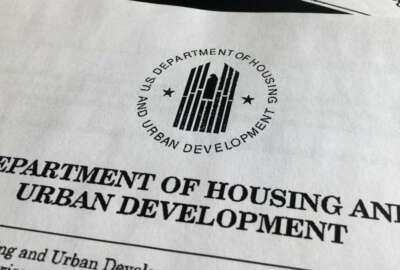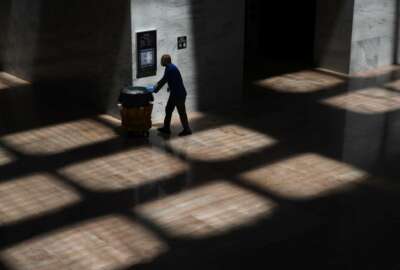
Work life after COVID-19: Work from home, work for less?
If you could work from home, would you work for less? That’s not an option for federal workers, yet, but it could be part of the major upheaval many experts...
If you could work from home, would you work for less? That’s not an option for federal workers, yet, but it could be part of the major upheaval many experts predict as the world comes out of and slowly adjusts to life after the pandemic.
Shaking hands and hugs for most people have already gone with the wind. What next?
A number of private, high-tech companies mostly located in very expensive neighborhoods have said they will let many, most and in some cases virtually all IT staff who are now working at home continue after the current situation improves. Some have also said they expect they can get top people to voluntarily work for less because they can do their jobs from anywhere, and won’t have the expenses or hassle associated with the daily commute.
Before the pandemic hit, teleworking in government, which Congress had pushed for many years, was in retreat with the coming of the Trump administration. Several federal agencies had or were in the process of drastically reducing the number of people who could work from home and the number of days per month when they could do it. Depending on your point of view the effort was either part of a drive to give managers more control over working conditions and reduce taxpayer-funded perks, like free office space and official time for union to conduct business, or an effort to punish unions and diminish their power in government agencies.
Either way teleworking is now bigger than ever thanks to or because of COVID-19. And the end is apparently nowhere in sight. Just follow the news. “Economists Fear Drawn-Out Slump As Losses Deepen; Worldwide Recovery Could Take Years As The Public Remains Averse To Risk” read the April 2 front page headline on The New York Times:
“And what was normal before may not be anymore. People may be less inclined to jam into crowded restaurants and concert halls even after the virus is contained. The abrupt halt of commercial activity threatens to impose economic pain so profound and enduring in every region of the world at once that recovery could take years. The losses to companies, many already saturated with debt, risk triggering a financial crisis of cataclysmic proportions.”
And according to some experts that may be an upbeat assessment once reality sets in. Think what’s happened already: Gold’s Gym, J. Crew, Neiman Marcus, Dean & DeLuca, JCPenny. Remember Sears, Blockbuster and Radio Shack?
While it’s true many major operations, such as GM, Delta, United and American Airlines survived early financial crises, for many employees things were never the same.
Which may make Uncle Sam the employer of choice for many Americans who know little about government as an employer except that during the current crisis, with 40 million unemployed, it prints the money behind the $1,200 checks that Congress and the White House are doling out to let out of luck Americans buy food and make partial payments on credit cards, rent and mortgages.
“My Grandpappy always said go to work for an outfit that prints the money,” a retired Bureau of Prisons employee wrote. “He was right, too. I’ve got my [Civil Service Retirement System] annuity, for life, while many of my private sector friends have only Social Security, in some cases an IRA to live on.”
He said he keeps an “intentionally low profile” but is grateful he decided to make a career in government.
Nobody has yet suggested that the expanded federal telework program remain in place after the current crisis is over or becomes a way of life. Certainly nobody has suggested how with standard and locality pay rates government could/should pay teleworkers whose home office is in New York City or San Francisco, or using the Rest of U.S. (RUS) wage scale if they lived and worked outside a locality pay area. But it’s a thought, maybe. Would you consider it, giving up some salary for the chance to telework from the place of your choice?
Tempting, or a dumb idea?
We asked a now-retired long-time Washington D.C.-based fed. He worked on Capitol Hill, then in downtown D.C. for all of his career:
“Here’s something locals might really identify with: I have been amazed at how smoothly one can get around the region during the lockdown. It turns out that when the two daily rush hour road gridlocks don’t occur, traveling at the posted speed limit is actually extremely efficient.
“The lights are indeed timed for continuous motion. The traffic planners’ success is buried behind congestion largely centered around morning and evening rush, which seem to really affect traffic all day long. I suspect Metro riders are finding their travels much less anxious, and even if trains travel less frequently they are likely more dependable when the system is not running full-out every day.
“These two effects of the lockdown alone save area residents many hours of time as well as stress. I believe most would be more than willing to give some in exchange for much more work from home even if they do physically stay in this high cost region.
“PS: As I write this from the office our normally packed parking lot has more spaces, by a considerable margin, than parked cars. Kinda nice.”
Thoughts? Send them to mcausey@federalnewsnetwork.com
Nearly Useless Factoid
By Amelia Brust
Australia’s Museum of Underwater Art is the first and only underwater art museum in the Southern Hemisphere, found off the coast of Queensland 40 to 50 feet below the waves and spread across four locations. Its underwater sculpture installations are anchored to the seabed and were created to raise awareness of the issues facing the iconic Great Barrier Reef. One above-water sculpture is the “Ocean Siren,” a stainless steel, translucent acrylic, and 202-LED-light feature that changes color in real-time based on water temperature. The museum also has an underwater “Coral Greenhouse” in the works.
Source: Atlas Obscura
Copyright © 2025 Federal News Network. All rights reserved. This website is not intended for users located within the European Economic Area.
Mike Causey is senior correspondent for Federal News Network and writes his daily Federal Report column on federal employees’ pay, benefits and retirement.
Follow @mcauseyWFED
Related Stories





